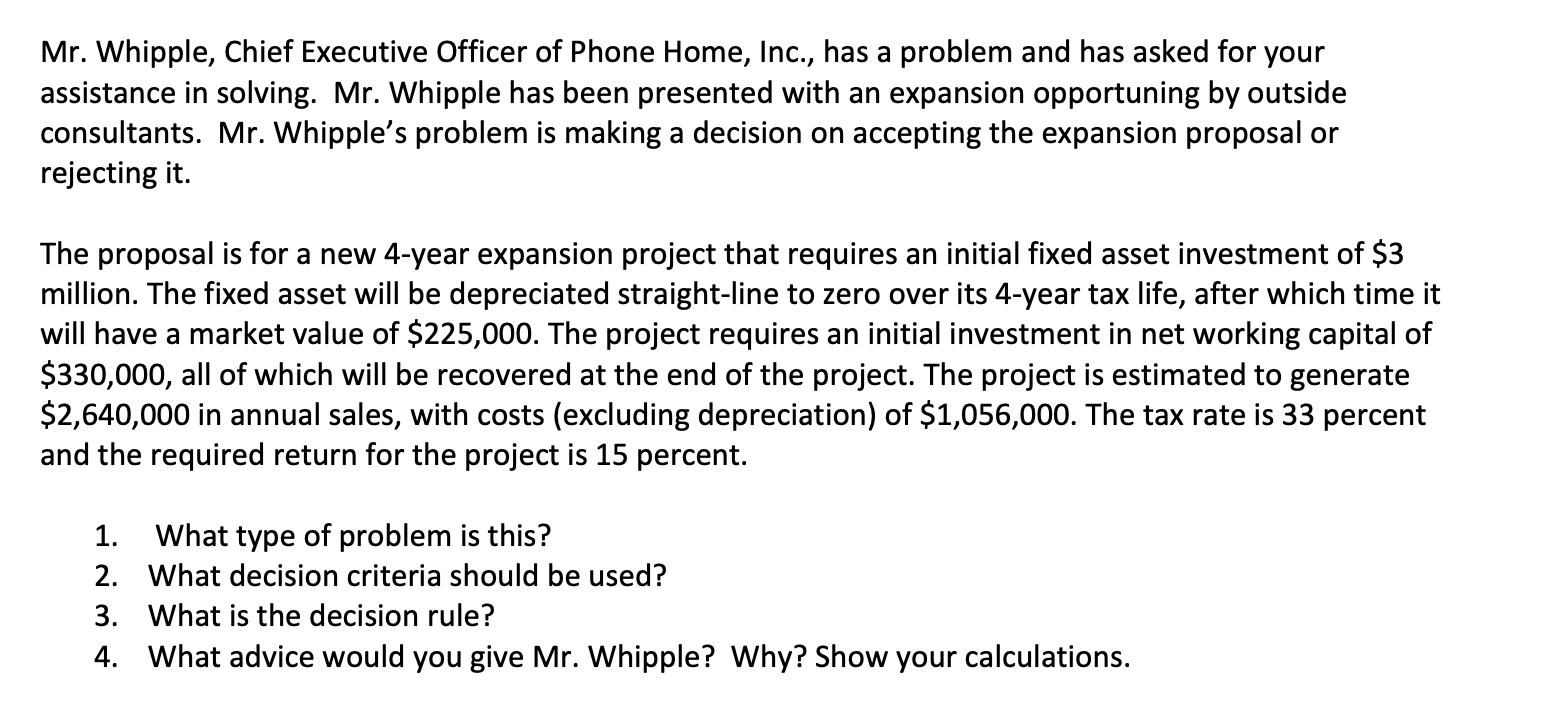
Mr. Whipple, Chief Executive Officer of Phone Home, Inc., has a problem and has asked for your assistance in solving. Mr. Whipple has been presented with an expansion opportuning by outside consultants. Mr. Whipple's problem is making a decision on accepting the expansion proposal or rejecting it. a The proposal is for a new 4-year expansion project that requires an initial fixed asset investment of $3 million. The fixed asset will be depreciated straight-line to zero over its 4-year tax life, after which time it will have a market value of $225,000. The project requires an initial investment in net working capital of $330,000, all of which will be recovered at the end of the project. The project is estimated to generate $2,640,000 in annual sales, with costs (excluding depreciation) of $1,056,000. The tax rate is 33 percent and the required return for the project is 15 percent. 1. What type of problem is this? 2. What decision criteria should be used? 3. What is the decision rule? 4. What advice would you give Mr. Whipple? Why? Show your calculations. Mr. Whipple, Chief Executive Officer of Phone Home, Inc., has a problem and has asked for your assistance in solving. Mr. Whipple has been presented with an expansion opportuning by outside consultants. Mr. Whipple's problem is making a decision on accepting the expansion proposal or rejecting it. a The proposal is for a new 4-year expansion project that requires an initial fixed asset investment of $3 million. The fixed asset will be depreciated straight-line to zero over its 4-year tax life, after which time it will have a market value of $225,000. The project requires an initial investment in net working capital of $330,000, all of which will be recovered at the end of the project. The project is estimated to generate $2,640,000 in annual sales, with costs (excluding depreciation) of $1,056,000. The tax rate is 33 percent and the required return for the project is 15 percent. 1. What type of problem is this? 2. What decision criteria should be used? 3. What is the decision rule? 4. What advice would you give Mr. Whipple? Why? Show your calculations







